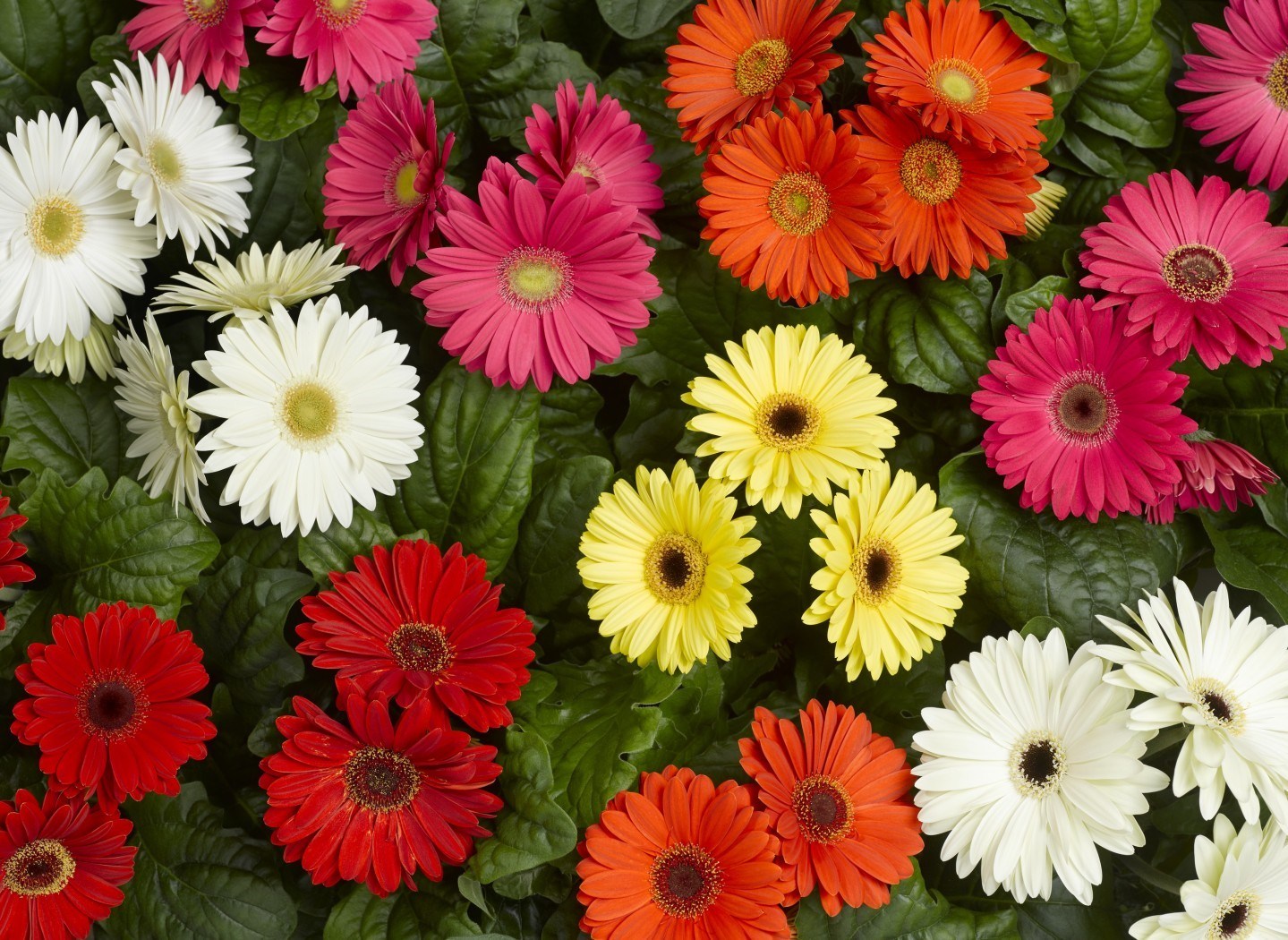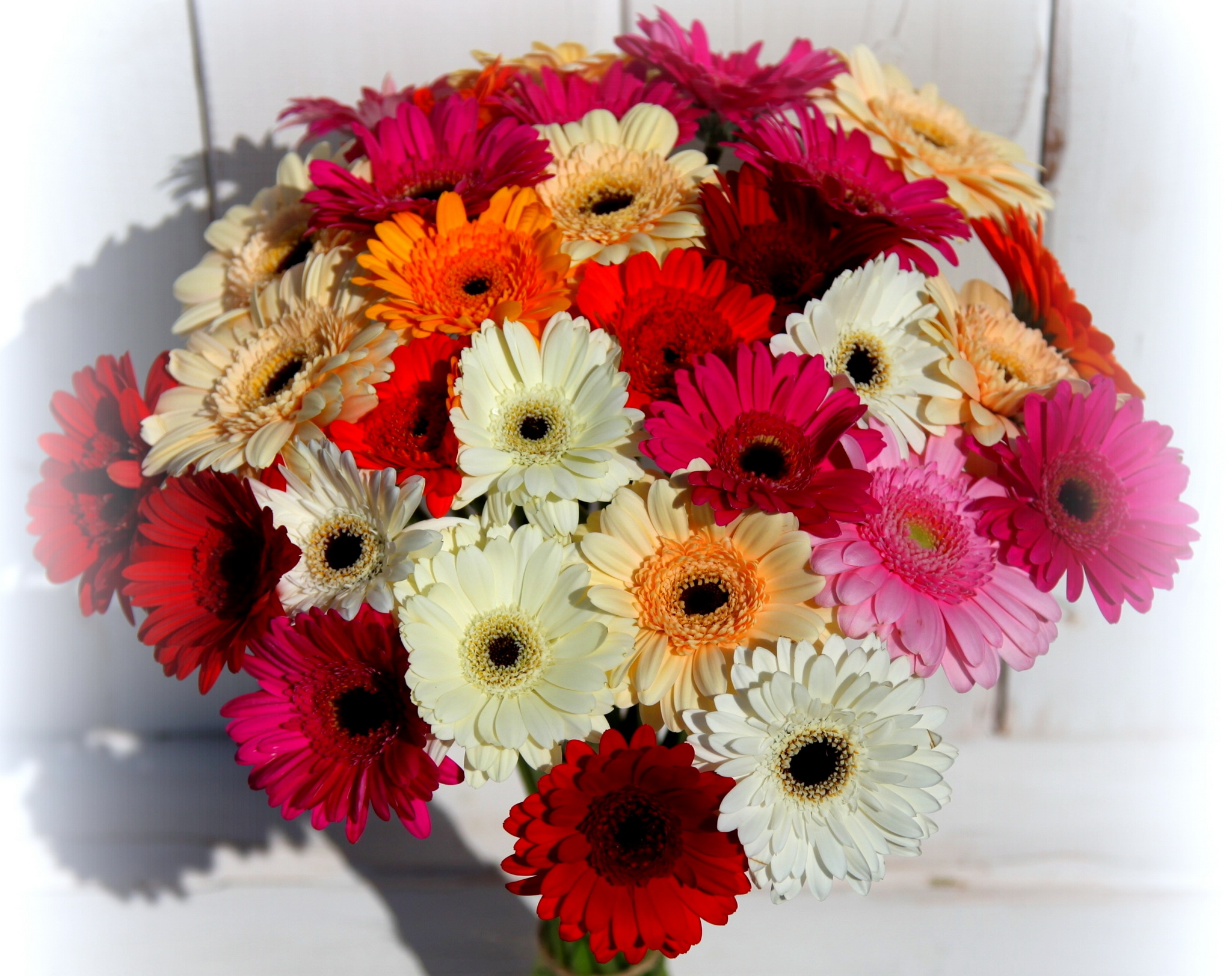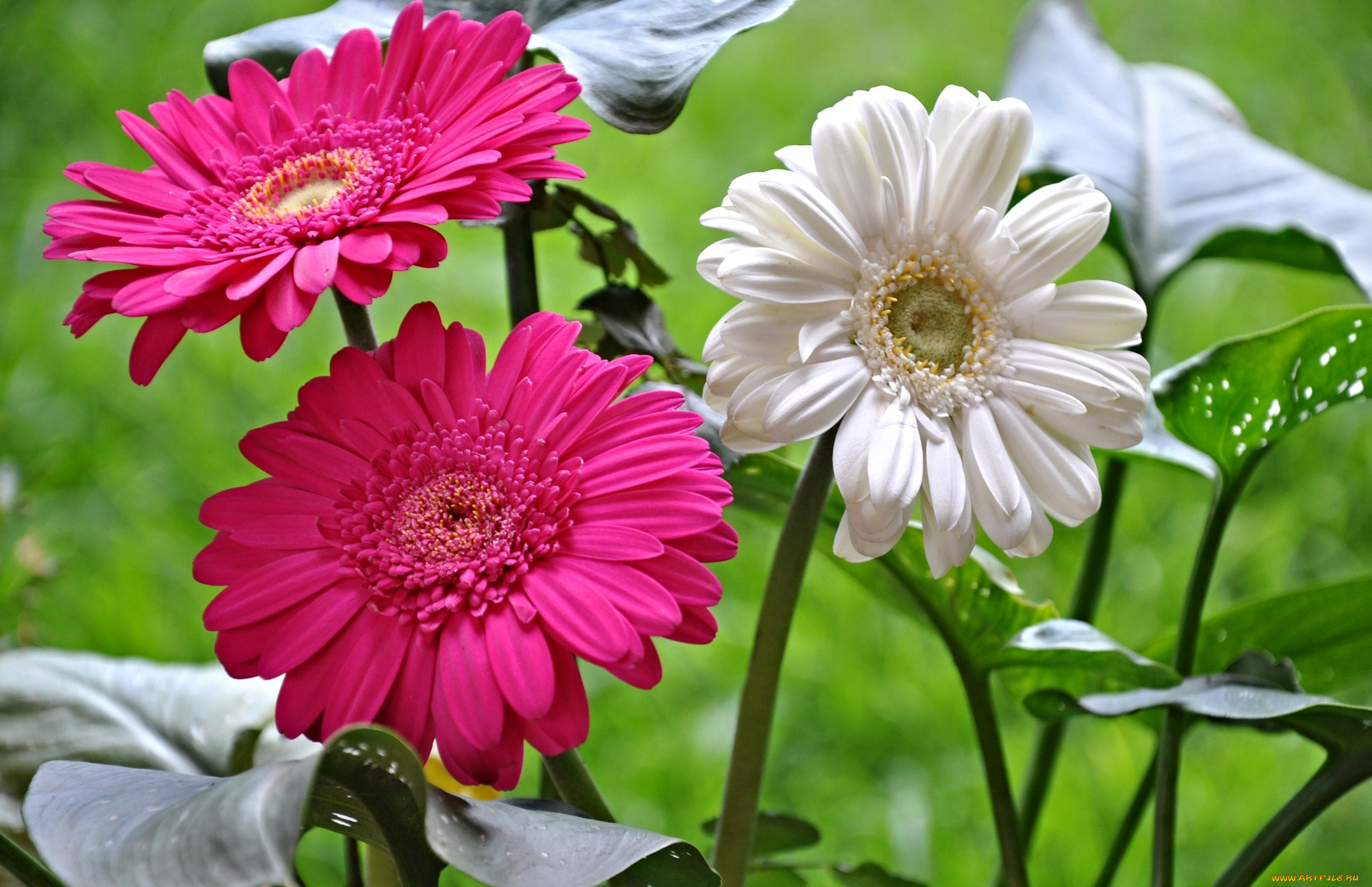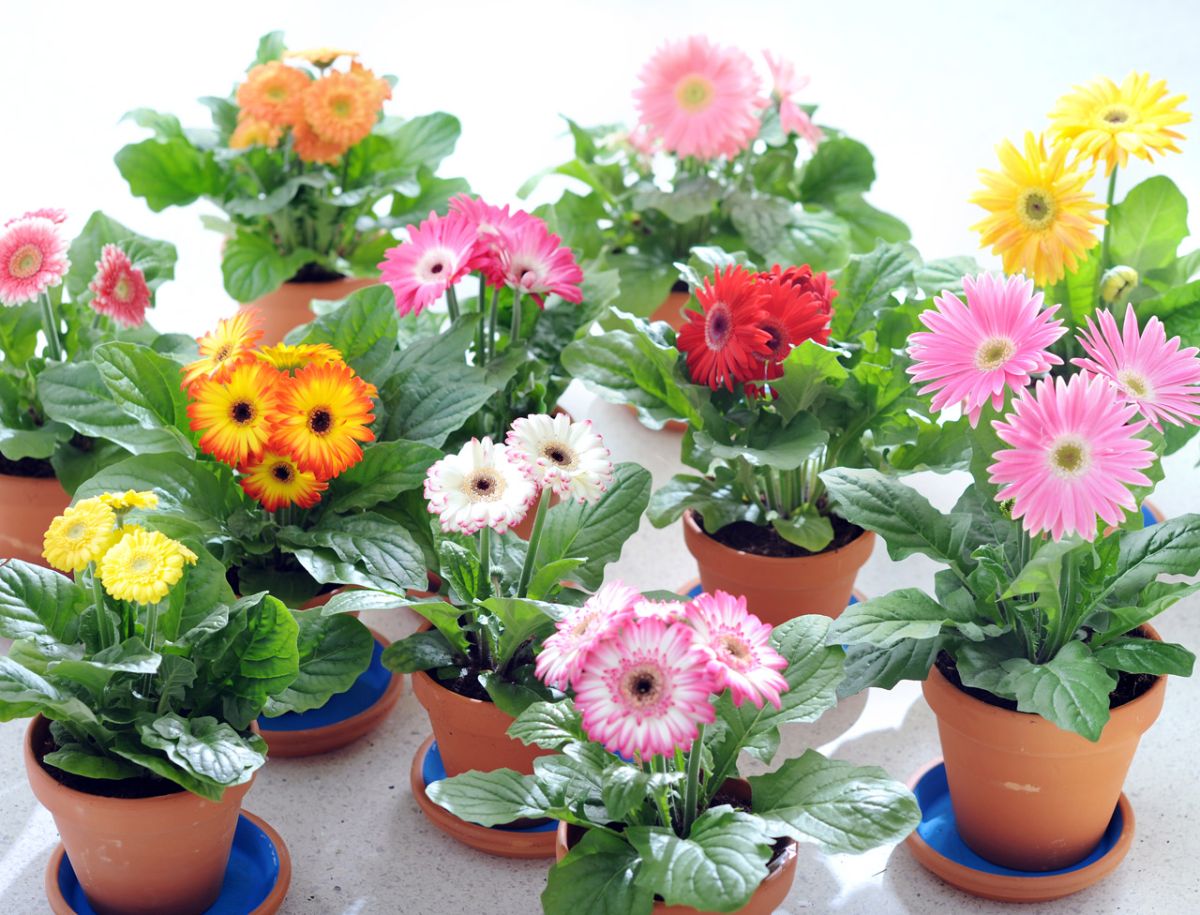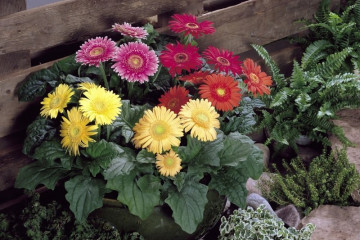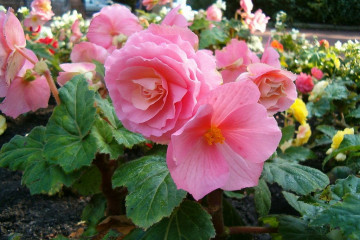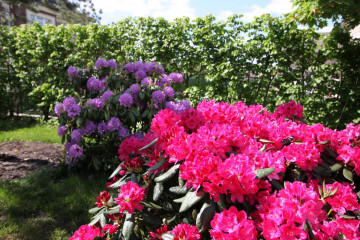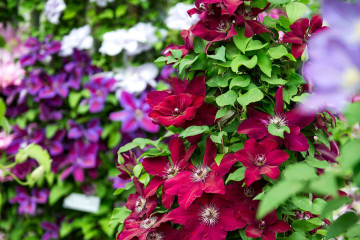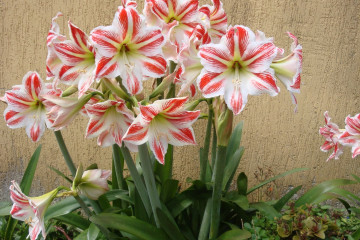Garden gerbera - how to grow in the garden
Content:
- Garden gerbera - what kind of flower is it, what family it belongs to
- Plant varieties, popular tall varieties, what they look like
- Planting garden gerbera in the open field
- How to care for a perennial
- Winter gerbera care
- Features of flowering plants
- Flower reproduction methods
- Growing problems, diseases and pests
Garden gerbera is one of the most popular plants among flower growers. Outwardly, it resembles a chamomile, however, unlike the queen of the fields, the gerbera requires special care. In gratitude, she pleases with generous flowering and bright colors of flowers. The description of the garden gerbera, planting and care, the features of reproduction and the problems of growing this plant should be considered in detail.
Garden gerbera - what kind of flower is it, what family it belongs to
Gerbera belongs to the Astrov family. The plant is characterized by a powerful root system, the height can reach 20-30 centimeters. Thick green leaves are collected in a neat rosette, above which flower stalks rise.
The average diameter of the inflorescence is 12 cm. It can bloom for 30 days. At the same time, the gerbera itself blooms for three months. During this time, up to two dozen flowers are formed on a compact bush. They are large, solitary, with a light core of baskets. Flowers can be regular, double or semi-double.
Short description, history of origin
Gerbera is native to South Africa. It grows in the wild. Scientists talk about two versions of the origin of the name of the flower. According to one of them, the gerbera got its name in honor of Traugott Gerber, a physician and biologist from Germany, who for many years worked in Russia and headed the apothecary botanical garden in Moscow. The second version says that from the Latin language the word "coat of arms" can be translated as "grass", and since this plant belongs to the herbaceous group, it could have been given such a name.
Plant varieties, popular tall varieties, what they look like
Despite the wide variety of species and varieties (to date, more than 1000 varieties have been bred), breeders continue to work on breeding new ones. Gardeners prefer hybrids and varieties that are characterized by high decorative qualities. It is worth considering the most popular varieties of gerberas that are suitable for outdoor cultivation.
Gerbera Jameson
This variety is called the main one. It was on its basis that all the species known to flower growers today were bred. Jamson's gerbera flower is on a sturdy, thick stem of medium height, leaves are large, pubescent, feathery in shape. Inflorescences, the diameter of which exceeds 10 centimeters, have one or more rows of petals, the total number of them usually reaches 30. The color palette is varied, while the middle of the flower contrasts with the main tone.The flowering time of one flower is 21 days.
Gerbera Wright
Gerbera Wright is usually grown for flower arrangements and as an important part of the landscape design of the site. The plant has a long flowering - it begins in spring and lasts until the onset of cold weather. The rosette consists of large feathery leaves, at the end of a long peduncle a flower is formed that looks more like a chamomile. The middle is usually yellow or white, the petals can be of different shades:
- red;
- purple;
- yellow;
- orange;
- pink.
Gerbera Abyssinian
The plant of this species looks more like a medicinal chamomile than others. In the wild, it is found in Ethiopia. The flowers are ligulate, most often white. Young foliage has slight pubescence. The root rosette consists of elliptical leaves.
Gerbera Alcor
The variety is ideal for outdoor cultivation. It is a small flower with narrow leaves and a thick cherry color. The average plant height reaches 60 cm.
Aldebaran and others
Narrow-petaled variety with small flowers of pleasant pink shade. The average diameter of the inflorescences rarely exceeds 9 cm.The height of the bush varies from 50 to 60 cm.Other varieties are also popular with gardeners - gerberas are grown in summer cottages and gardens:
- terry and semi-double - for example, Iskra;
- large-flowered with medium-sized petals - Mars;
- narrow-bodied with large flowers - Jupiter and Migar;
- broad-leaved inflorescences of small to medium size - Vera and Saturn.
Planting garden gerbera in the open field
Even short-term cold snaps can destroy a garden gerbera. Therefore, the best time to plant a flower in a permanent place in open ground begins after the threat of frost passes.
Location selection
One of the most important factors necessary for the full development of a plant is the right choice of location. The fact is that the plant will not bloom if it is planted in an area where there is not enough lighting. In addition, the place should be closed from wind and draft.
How to prepare the soil and seedlings for planting
The main difference between gerberas and other horticultural crops is that it will not grow on waterlogged soil, which is not to the taste of large chamomile and clay soil. It is important that the planting site is rich in magnesium, potassium and manganese. Experienced gardeners warn: when preparing the soil for gerbera, you should not add any kind of manure to it. Instead, a small amount of compost is added.
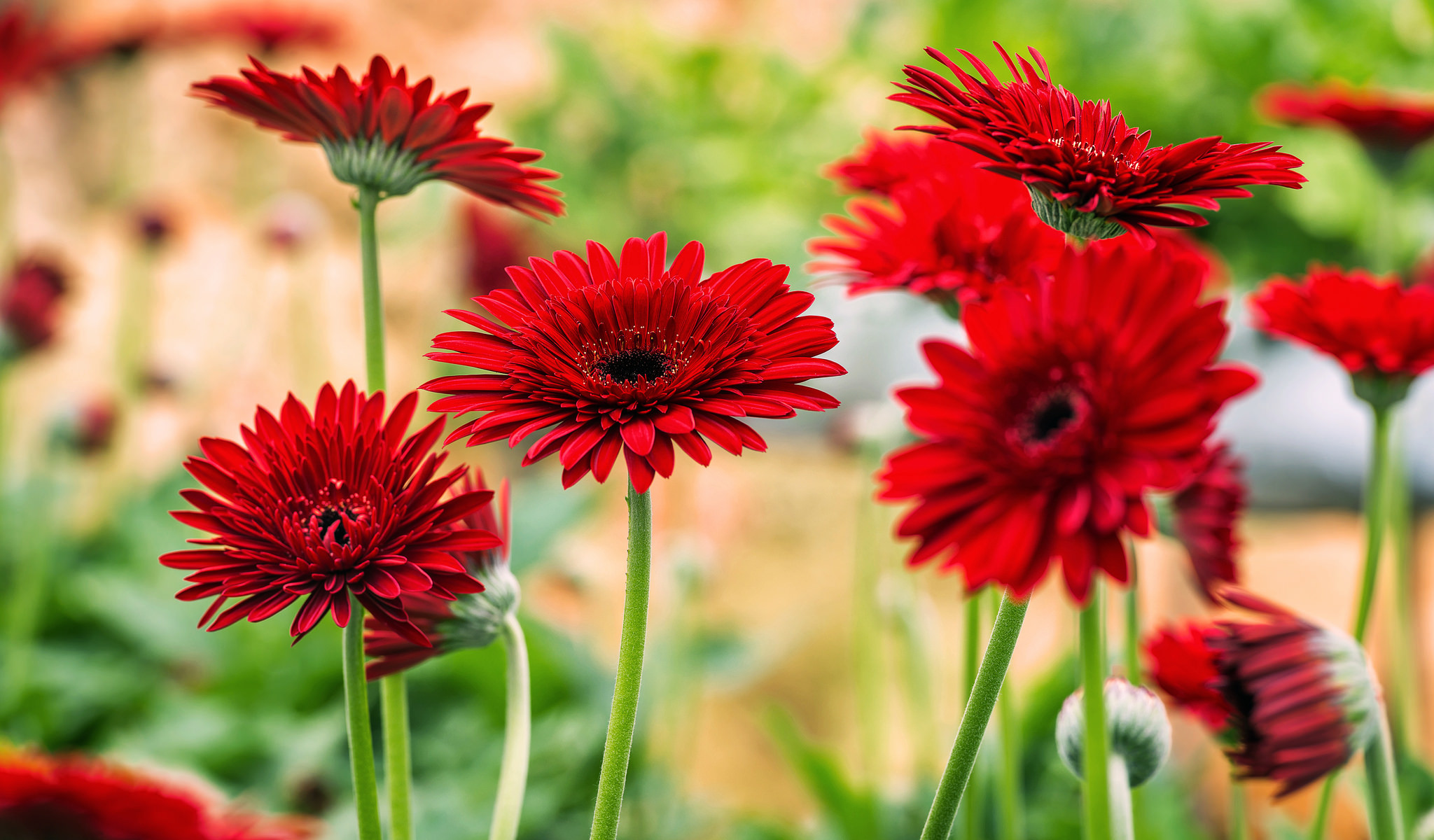
Plants must be provided with sufficient lighting, otherwise the peduncles will stretch out, and the flowers will be small
Before planting gerbera seedlings in the country, prepare seedlings. To begin with, it should be examined. It should not have white bloom, brown or yellowish brown spots. It should not be elongated. The normal color of the leaves is deep green. In order for the seedlings to adapt to the new conditions, they must be taken outside for the whole day.
How to care for a perennial
Speaking about how to grow gerberas, one cannot but say that the culture loves fresh air, it is demanding on bright lighting, moderate humidity levels, and timely feeding.
Watering rules and humidity
The crop prefers small but frequent watering. During the growing season, a garden gerbera requires more water, but it is important to ensure that the roots do not have stagnant moisture.
There are a number of rules to follow:
- water must not enter the outlet;
- water should be avoided on the leaves;
- use only warm water - 26-28 ℃ above zero.
For any gerbera in the garden, cultivation and care should be as close as possible to the natural conditions of warm countries. Florists note: it is undesirable to spray gerberas, but the level of humidity should be high - about 65-75%, but should not exceed 85%.
Before planting a gerbera, the place for it should be treated with phytosporin - to prevent fungal diseases.
Top dressing and soil quality
30 days after transplanting the flower to a permanent place, the first fertilizers can be applied to the soil. Florists recommend applying mineral fertilizers once every 14 days from March until autumn.
Organics are prohibited. Flowers will react negatively to formulations containing chlorine, cow or bird manure. Due to such fertilizers, rot of the root collar can develop, the plant will die.
Pruning and replanting
After the plant has faded, it is necessary to carry out the pruning procedure. Dry leaves, peduncles, on which flowers have already bloomed, should be removed. Pruning excess leaves will not be superfluous - this is necessary to stimulate new flowers.
It is best to replant gerberas in spring. The soil should be light, drained. The roots should be cut, leaving only 10-15 cm. Before transplanting, the root collar of the plant should be treated with a slightly pink solution of potassium permanganate.
Winter gerbera care
The breeders managed to develop varieties that can withstand a drop in temperature to -10 однако, however, they also need shelter for the winter.
Speaking of whether a perennial is a gerbera or an annual, it should be said that everything depends on the climatic conditions of the region. In regions where winters are harsh, it is recommended to transplant the plants into containers - and move them indoors. At home, the plants will definitely survive the winter. In the southern regions, it is enough to cut the flower stalks, stop fertilizing, and reduce watering. The bushes should be covered with straw and fallen leaves before winter.
Features of flowering plants
Separately, it should be said about how and when the garden gerbera blooms.
A period of activity and rest
Plants have a long flowering period of three months. Gerberas do not have a sleep period, but in the colder months, all processes slow down.
Types and shape of flowers
Gerbera flowers can be ordinary, double, semi-double. The size of the inflorescences is large, the shape resembles a daisy or chamomile.
Flower reproduction methods
There are several ways to propagate a plant. The main ones are by dividing the bush and seeds.
Reproduction by dividing the bush
In early spring, you need to dig out a bush and divide it into several shoots. Each should have leaflets. Shoots should be planted in the ground in such a way that the outlet protrudes no more than a centimeter.
Seed propagation
Speaking about how to get bright gerbera flowers, how to grow them from seeds, one cannot but say that this process is energy-consuming. Already in January-February, seedlings are planted. The seeds are soaked in water, in no case allowing them to dry out.After 4-5 days, when the seeds begin to hatch, they are transferred to moist, loose soil. Sprinkle the soil on top with sand and cover with a film. From time to time, the earth is moistened - it is best to do this with a spray bottle. The first shoots will appear in a week.
Growing problems, diseases and pests
Most often, gerberas are subject to fungal diseases. In the event that the fungus has infected the root system of the plant, the flower should be transplanted to a new place, having previously treated the soil and plant roots with antifungal drugs. Preparations will help get rid of gray rot.
Among the most common causes leading to the disease, experts identify:
- excessive watering - because of it, fusarium and late blight develop;
- lack of moisture - leads to the appearance of a spider mite;
- aphid attacks - the plant begins to wilt.
Gerbera can stop blooming when there is not enough sunlight, the soil contains too much nitrogen. If the leaves begin to turn yellow and dry, the plant lacks moisture.
Gerberas can become the real pride of a gardener and the main decoration of the garden - for this it is enough just to know how to properly plant seedlings in a permanent place, how to care for them. All efforts and time expenditures will certainly pay off - the gerbera will delight you with lush flowering and a real riot of colors.
